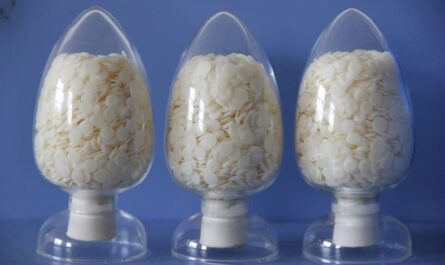Made from high-density polymer sheets fabricated into a honeycomb pattern, geocells provide effective slope stabilization, channel lining, subgrade improvement and other applications. With their unique cellular confinement structure, geocells offer an innovative modern alternative to traditional methods of soil reinforcement.
Applications of Geocells
Some of the key applications where geocells are used include:
Slope Stabilization
One of the most common uses of geocells is for slope stabilization. Geocells are laid out and filled with soil or aggregate on slopes that are prone to erosion, slumping or failure. The cells work to prevent soil movement and reinforce the slope structure. Steep embankments for highways, rail lines and construction sites are some projects where geocells effectively add strength and stability to slopes.
Subgrade Improvement
The unique cellular structure of geocells allows them to strengthen and upgrade low-load bearing soils that are used for construction subgrades. By filling the geocells with on-site or imported aggregate, the subgrade soil gains strength and load distribution properties. This reduces the need for large volumes of higher-quality imported fill. Geocells are used for roadways, parking lots, building foundations and other applications requiring a stable subgrade.
Channel Lining Protection
In applications like drainage channels, irrigation canals, levee spillways and stream bank erosion control, geocells provide an reinforced lining that protects the earthen structure from water erosion. The honeycomb cells are filled with rock, gravel or soil and act as a flexible armor layer over the soil below. Geocells withstand high flows and impacts while keeping the protected soil intact.
Other Uses
Geocells have additional applications such as retaining wall reinforcement, asset protection around utility poles and pipes, vegetated roofs and landscaping applications. The structural strength and versatile properties of geocells make them suitable for various civil engineering projects.
Key Advantages of Geocells
Here are some of the major advantages that geocell technology provides compared to conventional soil reinforcement methods:
Increased Strength – By confinement of infill materials within the geocell structure, shear strength parameters of weak or poor soils are greatly improved. Load distribution across a broader reinforced area is superior to singular reinforcement elements.
Faster Installation – Geocells require minimal site preparation and can be quickly rolled out across a large area and filled. Grids or meshes typically take more time and labor for installation.
Conforms to Site – The flexible honeycomb structure allows Geocells to conform to uneven ground contours and shorelines, providing continuous soil reinforcement coverage.
Permeable – Unlike solid surfaces, geocell structures permit water and plant root percolation through the cells. This is an advantage for applications requiring erosion control and vegetation establishment.
Durable – High-density polyethylene material resists weathering and corrosion. Geocells maintain design strength characteristics for 50+ years of use with minimal deterioration.
Cost Effective – Overall costs including material, installation and long-term performance usually make geocells a lower-cost solution than rock armor, concrete, shotcrete or retaining walls.
Environmentally Friendly – Being non-toxic and non-rusting, geocells have minimal impact on the environment both during installation and throughout the lifespan of the project.
Versatile – Same geocell panels can perform multiple functions based on infill selection and installation design. Subtly contoured installations provide a natural appearance.
With their ability to solve slope stability, drainage and foundation problems across a wide range of terrains and soil conditions, geocells have transformed the way we think about soil reinforcement and erosion control applications. Their combination of structural integrity, ease of use and environmental compatibility is revolutionizing infrastructure project design. Geocells present a modern solution that improves constructability, reduces costs and provides long-term resilient performance for civil engineering works.
Geocell technology is gaining rapid adoption worldwide for its powerful yet simple method of reinforcing soils. The unique cellular confinement structure delivers extensive benefits over traditional methods for a diverse set of project needs. From road building to water management to construction site preparation, geocells open up new design possibilities while also reducing infrastructure costs. With their long service lifespan and minimal maintenance needs, geocells deliver excellent value and economic return on investment. As more contractors and engineers experience the installation and performance advantages firsthand, geocells will certainly continue growing as a preferred reinforcement solution for the future of civil construction.
Note:
1. Source: Coherent Market Insights, Public sources, Desk research
2. We have leveraged AI tools to mine information and compile it




